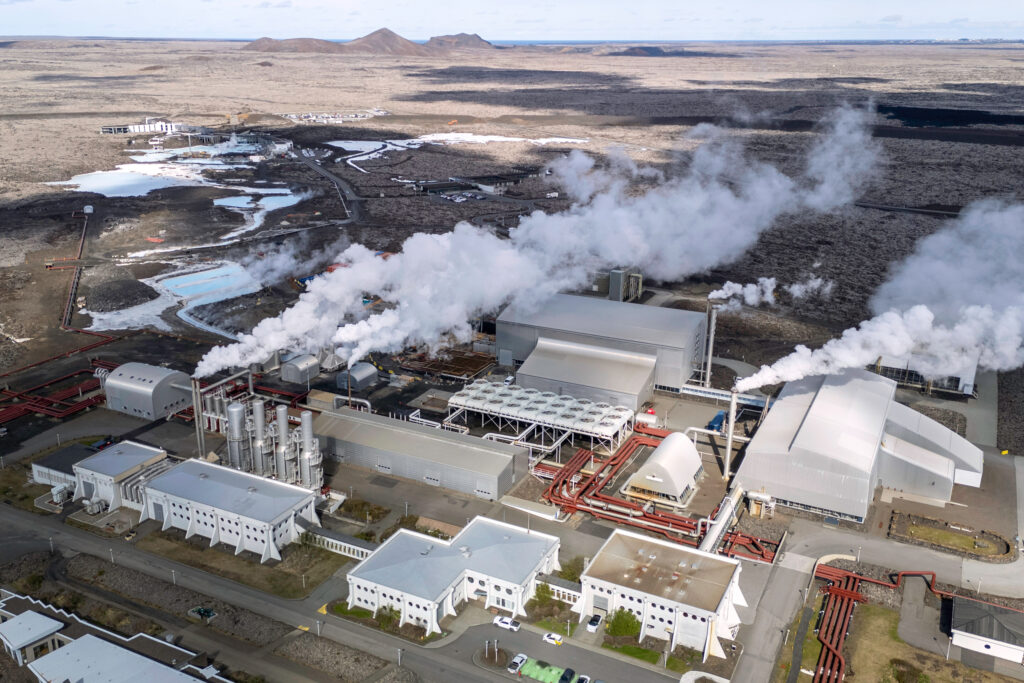From our collaborating partner Living on Earth, public radio’s environmental news magazine, an interview by Paloma Beltran with Jamie Beard, the founder of Project InnerSpace, which aims to advance geothermal power generation.
The Earth’s crust contains a vast supply of heat that can be converted into electricity through geothermal technology.
Traditionally, geothermal power generation has been concentrated in volcanic regions like Iceland due to easy access to underground heat. However, breakthroughs in deep drilling technology are transforming the industry globally.
In 2006, MIT-led research highlighted the potential of deep geothermal as a continuous renewable energy source, which could significantly impact climate change. Recently, the Interior Department approved the large-scale Fervo Energy project in Utah, set to produce up to 2 gigawatts, powering more than 2 million homes.
Jamie Beard, founder of Project InnerSpace, aims to advance geothermal energy using drilling expertise from the oil and gas sector. This interview has been edited for brevity and clarity.
PALOMA BELTRAN: How would you describe the current state of geothermal energy in the United States?
JAMIE BEARD: The current state is exciting. Geothermal has been relatively inactive in the U.S. and globally because it is geographically limited and lacks awareness and investment. But this is changing in the United States, with many stakeholders now interested in developing geothermal projects. Technology companies and the oil and gas industry are increasingly engaging in geothermal energy projects.
BELTRAN: What is the potential for geothermal in our energy landscape, particularly for base load power?
BEARD: Solar and wind energy are intermittent. Geothermal, once developed, offers a high capacity factor, meaning it provides continuous power, regardless of sun or wind availability. This makes it ideal for critical infrastructure like data centers that require reliable clean power. Geothermal is also promising for heating and cooling.
BELTRAN: How deep are we talking about for next-generation geothermal?
BEARD: Next-generation geothermal involves drilling as deep as we do for oil and gas, between 10,000 and 30,000 feet. While very deep, hot resources remain future targets, a significant amount of geothermal energy can be tapped at these depths. This is the low-hanging fruit we should pursue initially.
BELTRAN: What opportunities exist for involving the fossil fuel industry in clean energy transitions?
BEARD: The biggest opportunity in geothermal is leveraging the oil and gas industry’s capabilities, technologies, and workforce. The industry’s global scale can accelerate clean energy production. If the oil and gas sector focuses on geothermal, the potential impact on global energy supply could be substantial.
BELTRAN: Does geothermal technology involve fossil fuels?
BEARD: Energy is required to build plants and projects, so some carbon emissions are likely unless everything is electrified. However, geothermal mainly uses Earth’s heat for clean electricity and heat, making it virtually carbon-free. Some next-generation concepts employ fracking technology to enhance geothermal systems, without the oil and gas components.
BELTRAN: Why are you confident in scaling up this technology?
BEARD: The shale boom demonstrated rapid energy sector transformation. Within a decade, the U.S. became a leading oil and gas producer through technological advances. Similar innovation and speed could drive a geothermal boom, previously achieved with unconventional oil and gas methods.
Original Story at insideclimatenews.org
